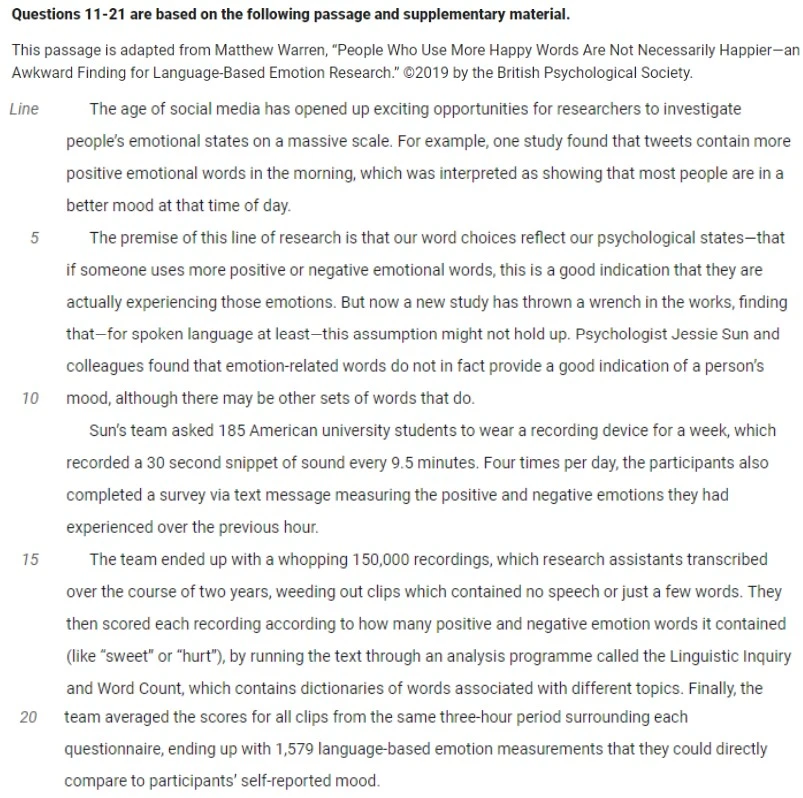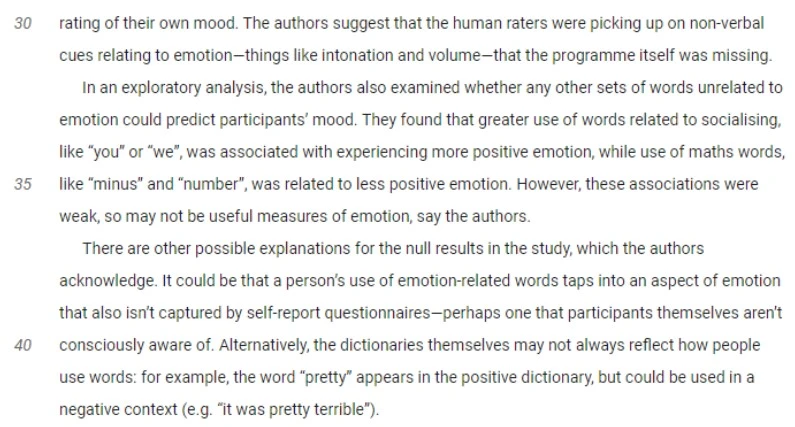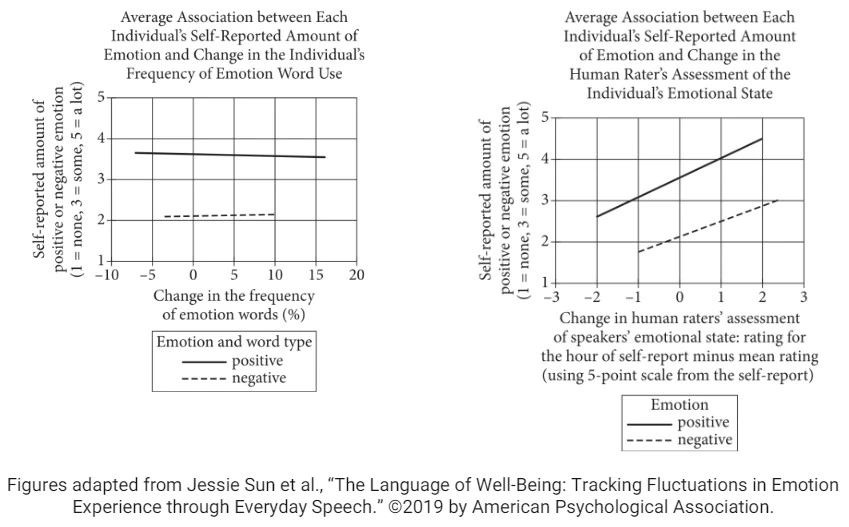Section: Reading and Writing 0 Likes
The age of social media has opened up exciting opportunities for (May 2023 U.S.)




Questions from the Passage
11) The main purpose of the passage is to
A. present findings that weaken the popular theory that social media usage alters individuals’ emotional vocabularies.
B. summarize an experiment intended to investigate a hypothesis about how language usage affects emotional states.
C. describe research that challenges an assumption underlying studies about the relationship between language and emotions.
D. discuss a study that incorporates the use of some novel tools developed for the study of emotionally charged language.
12) Based on the passage, which finding, if true, would most strongly support the reliability of the method used by Sun’s team?
A. People tend to explicitly describe their emotional states less frequently than every 9.5 minutes.
B. People tend to retain fairly accurate memories of their emotional states for several hours after experiencing them.
C. People tend to report positive emotional states as being of greater duration than are negative emotional states.
D. People tend to be more accurate when evaluating friends’ emotional states than when evaluating strangers’ emotional states.
13) Which choice provides the best evidence for the answer to the previous question?
A. line 5-7 (“The premise . . . emotions”)
B. line 7-8 (“But . . . hold up”)
C. line 11-12 (“Sun’s . . . minutes”)
D. line 12-14 (“Four . . . hour”)
14) A student raises the possibility that a single clip containing an unusually high number of emotional words could have a disproportionate influence on Sun’s team’s measurement of that participant’s emotional word use. Which choice best supports the idea that Sun’s team accounted for this possibility in the design of the study?
A. line 15-16 (“The team . . . words”)
B. line 16-19 (“They . . . topics”)
C. line 19-22 (“Finally . . . mood”)
D. line 23-24 (“The researchers . . . mood”)
15) One important function of the quotation from Sun’s team’s study in line 24-26 (“Our . . . language”) is to
A. suggest how the study’s conclusions could influence the design of future studies.
B. acknowledge that additional research may be needed to validate the team’s findings.
C. emphasize that the study qualifies rather than overturns a controversial view.
D. rule out a potential criticism of how the study was carried out.
16) Based on the passage, Sun’s team would most likely agree that one limitation of using transcriptions of speech to evaluate speakers’ emotions is that
A. transcriptions are prone to erroneous representations of speakers’ word choices.
B. most of the words in a transcription will typically not be emotionally positive or negative.
C. information about speakers’ emotions can be conveyed in ways that transcriptions do not represent.
D. transcribed speech from speakers in highly emotional states tends to be difficult for readers to comprehend.
17) According to the passage, Sun’s team found that the associations they detected between emotional states and certain groups of nonemotional words were
A. not strong enough to simply treat those groups of words as reliable indicators of emotional states.
B. not widespread enough to exclude the possibility that only a subgroup of individuals uses those words in emotional ways.
C. so weak that emotional words are a preferable measure of speakers’ emotions.
D. so surprising that the team suspects that they may have made errors in transcribing those words.
18) As used in line 39, “captured” most nearly means
A. controlled.
B. recorded.
C. conquered.
D. attracted.
19) Information in the passage most strongly suggests that the results shown in figure 1 might be due in part to
A. human raters detecting changes in participants’ emotional states based on factors such as intonation and volume.
B. participants unconsciously altering their word choices as a result of knowing that their speech would be analyzed.
C. the classification of some words as positive or negative not accurately indicating how participants used those words.
D. words related to socializing being more likely to be classified as positive emotion words than as negative emotion words.
20) According to figure 2, when the change in human raters’ assessment of speakers’ emotional state was 1, the average self-reported amount of
positive emotion was approximately
A. 1.8.
B. 2.5.
C. 3.
D. 4
21) Both figures support which statement about participants in the study, on average?
A. They reported greater amounts of positive emotion than negative emotion.
B. They used more positive emotion words than negative emotion words.
C. They experienced little change in emotional state over the course of the day.
D. They showed a decline in the frequency of positive emotion words as human raters’ assessment of their emotional state increased.
Solution
Correct answer:
11 - C
12 - B
13 - D
14 - C
15 - A
16 - C
17 - A
18 - B
19 - C
20 - D
21 - A
Exam Edition: May 2023 U.S.
Exam Year: 2023
Related topics: Text Reading, Text Interpretation, Text and Graphics Understanding